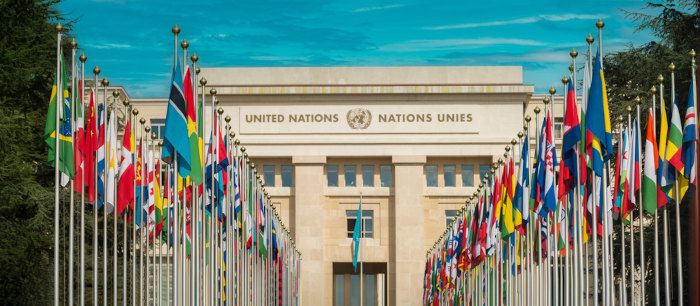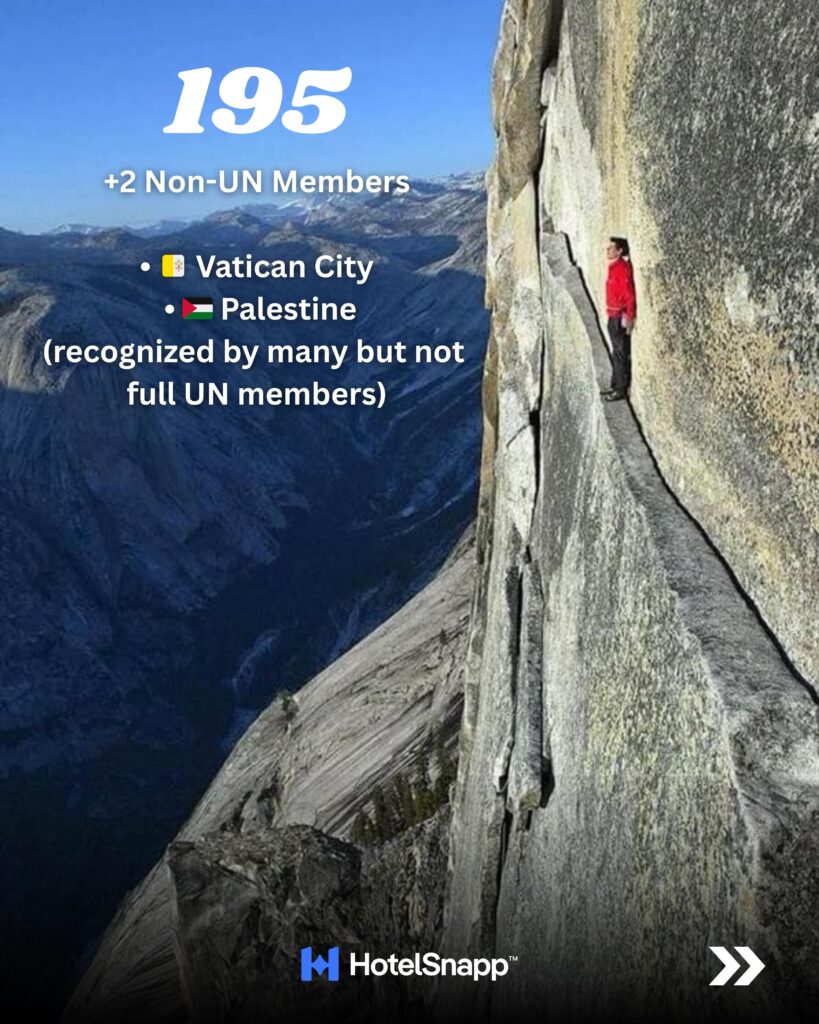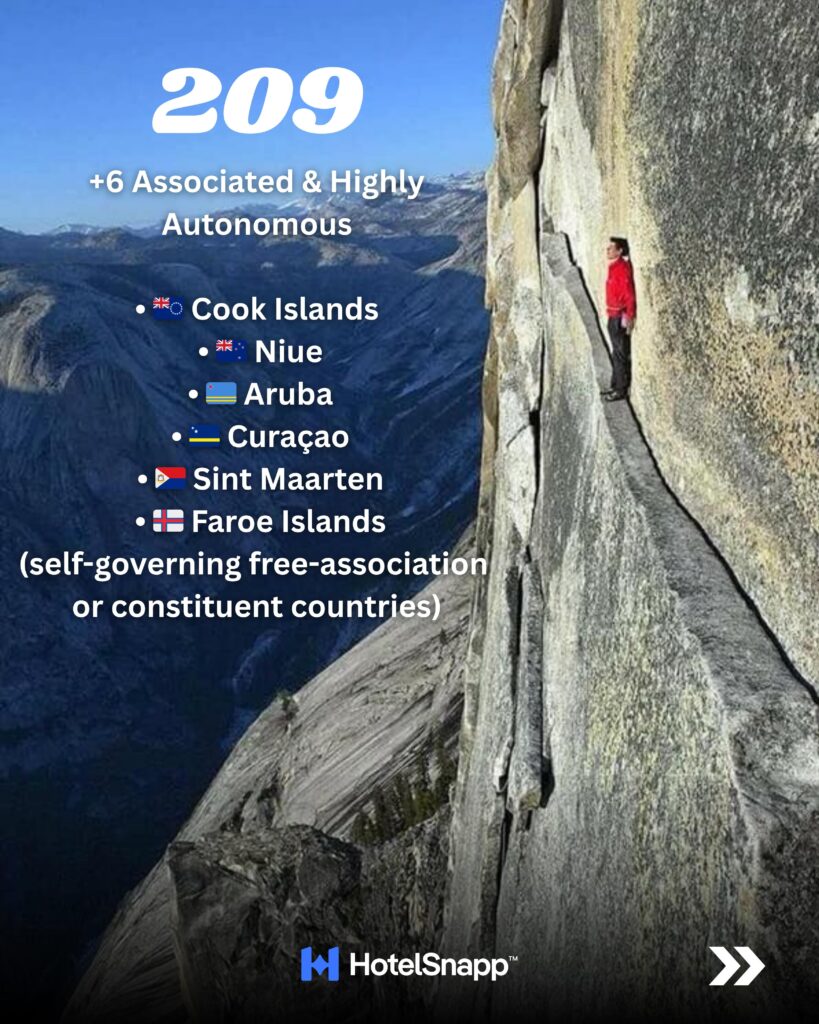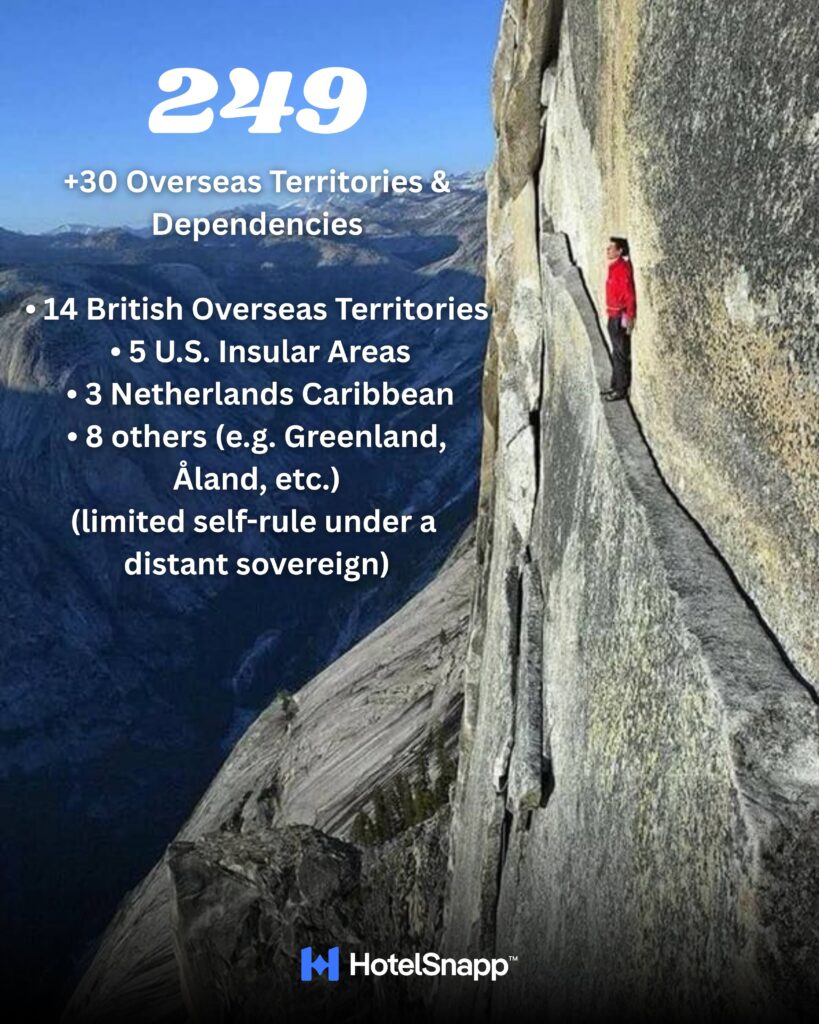How Many “Countries” Are There in the World?

Curious about how many countries exist? Explore the full spectrum of global states, from UN members to territories, in this detailed guide.

Introduction
How many countries are there in the world? It seems like a straightforward question, but the answer is far from simple. Depending on your definition of “country,” the number ranges from 193 to over 249. From fully recognized sovereign states to semi-autonomous regions and self-declared republics, our planet’s political landscape is a dynamic mosaic of international recognition, governance, and autonomy.
This article offers a comprehensive breakdown of how countries are counted globally and what qualifies a place as a “country” in the eyes of the world.

193 UN-Recognized Sovereign States
The most universally accepted answer is 193, referring to the number of member states in the United Nations. These nations are considered internationally recognized sovereign entities with full UN membership.
Criteria for UN Membership:
- Recognized borders and defined territory
- Permanent population
- Government
- Capacity to enter into relations with other countries

195 Countries with Limited Recognition
Adding two widely accepted observer states brings the number to 195:
1. Vatican City
- Recognized by all UN members but holds permanent observer status, not full membership.
2. Palestine
- Recognized by over 130 countries and also holds observer status in the UN.

197 Countries with Broad Recognition
When we include two more entities with widespread recognition but limited UN acknowledgment, we reach 197:
3. Taiwan
- Operates as a fully independent nation with its own government, economy, and passport system, yet is not a UN member due to China’s opposition.
4. Kosovo
- Declared independence from Serbia in 2008; recognized by over 100 UN member states.

Beyond Recognition: 203 De Facto & Secessionist Entities
When considering territories that have declared independence and maintain control over their territory, the number increases to 203:
- Artsakh (Nagorno-Karabakh)
- Abkhazia
- South Ossetia
- Northern Cyprus
- Transnistria
- Somaliland
While these entities function as independent countries, they lack widespread diplomatic recognition.

209 with Highly Autonomous or Associated States
Add 6 territories that are highly autonomous or self-governing but not fully independent. These are often in free association or are constituent countries:
- Cook Islands
- Niue
- Aruba
- Curaçao
- Sint Maarten
- Faroe Islands
They manage their own affairs but are often represented internationally by another country (e.g., New Zealand or Denmark).

214: Federated & Home Nations
In this layer, we include 5 sub-national entities with significant autonomy or unique governance systems:
- Scotland
- Wales
- Northern Ireland
- Québec
- Karakalpakstan (an autonomous republic within Uzbekistan)
Though they are not independent states, their distinct identity, governance, and international presence warrant special mention.

219: Fully Integrated Overseas Departments
France contributes to this count with its fully integrated overseas departments that have the same status as mainland France:
- French Guiana
- Guadeloupe
- Martinique
- Réunion
- Mayotte
These are considered part of France for administrative purposes, even though they are geographically distant.

249: Including Territories & Dependencies
The most expansive list includes 30 additional overseas territories and dependencies, bringing the total to 249.
These include:
- 14 British Overseas Territories (e.g., Bermuda, Gibraltar, Falklands)
- 5 U.S. Insular Areas (e.g., Guam, Puerto Rico)
- 3 Dutch Caribbean territories
- 8 others (e.g., Greenland, Åland Islands)
These regions often have their own governments but remain under the sovereignty of another state.

Why the Number Varies
The discrepancy in country counts depends on definitions and political considerations. Some institutions use different frameworks:
- UN: 193 members
- U.S. Department of State: 195 recognized countries
- International Olympic Committee: Over 200 teams
- FIFA: 211 member associations
These counts reflect various criteria: political recognition, sports governance, administrative autonomy, or diplomatic relationships.

Summary Table: How Many “Countries” Exist?

Final Thoughts
So, how many countries are there in the world? The answer depends on your criteria: legal recognition, political autonomy, or international representation. From 193 UN member states to 249 global territories, our planet is as politically diverse as it is culturally rich.
Understanding these layers deepens our appreciation for the complexity of global governance and geography.
What Do You Think?
Have you visited any of the lesser-known countries or regions listed above? Would you consider traveling to a partially recognized or autonomous territory? Share your thoughts, experiences, or questions in the comments below!